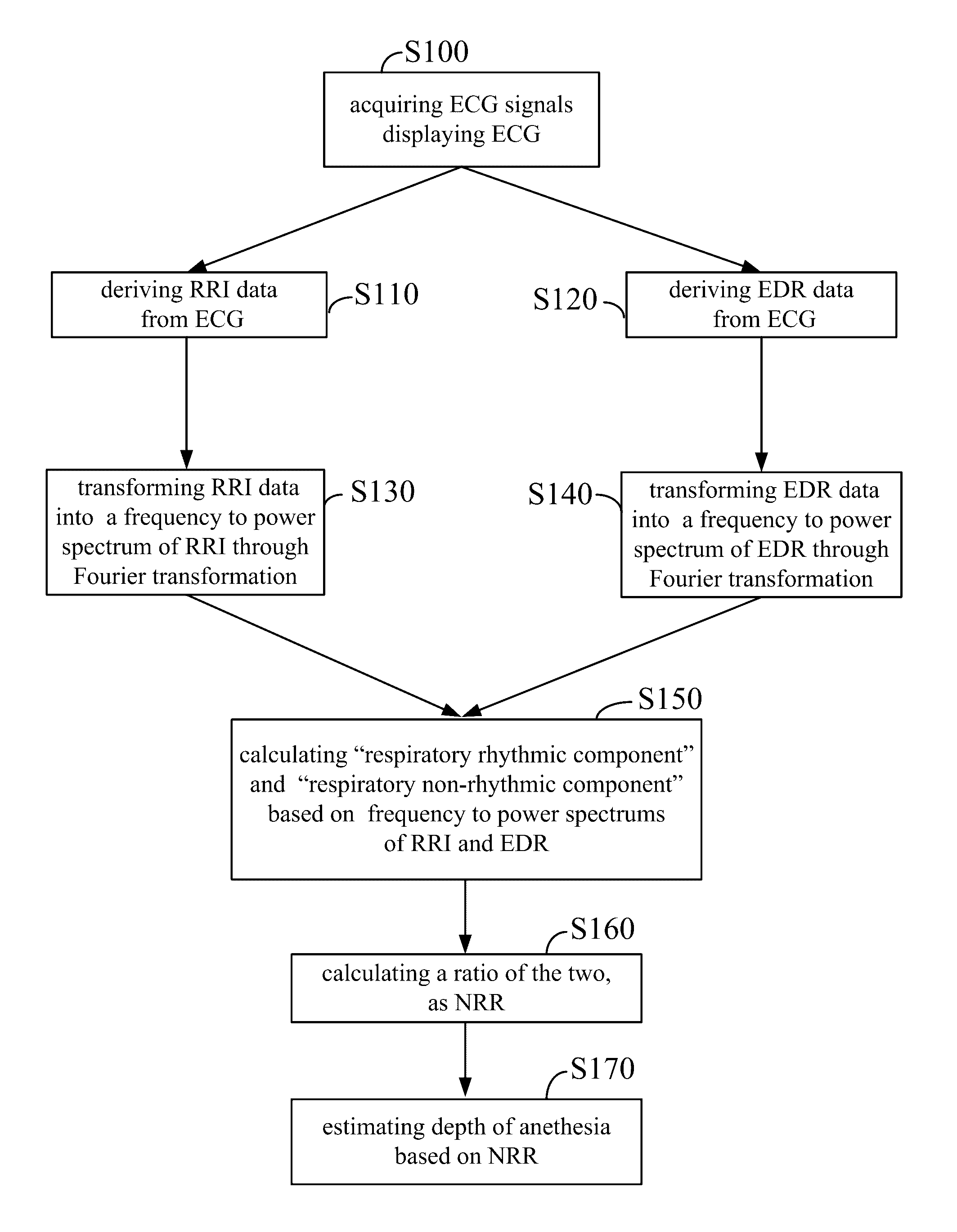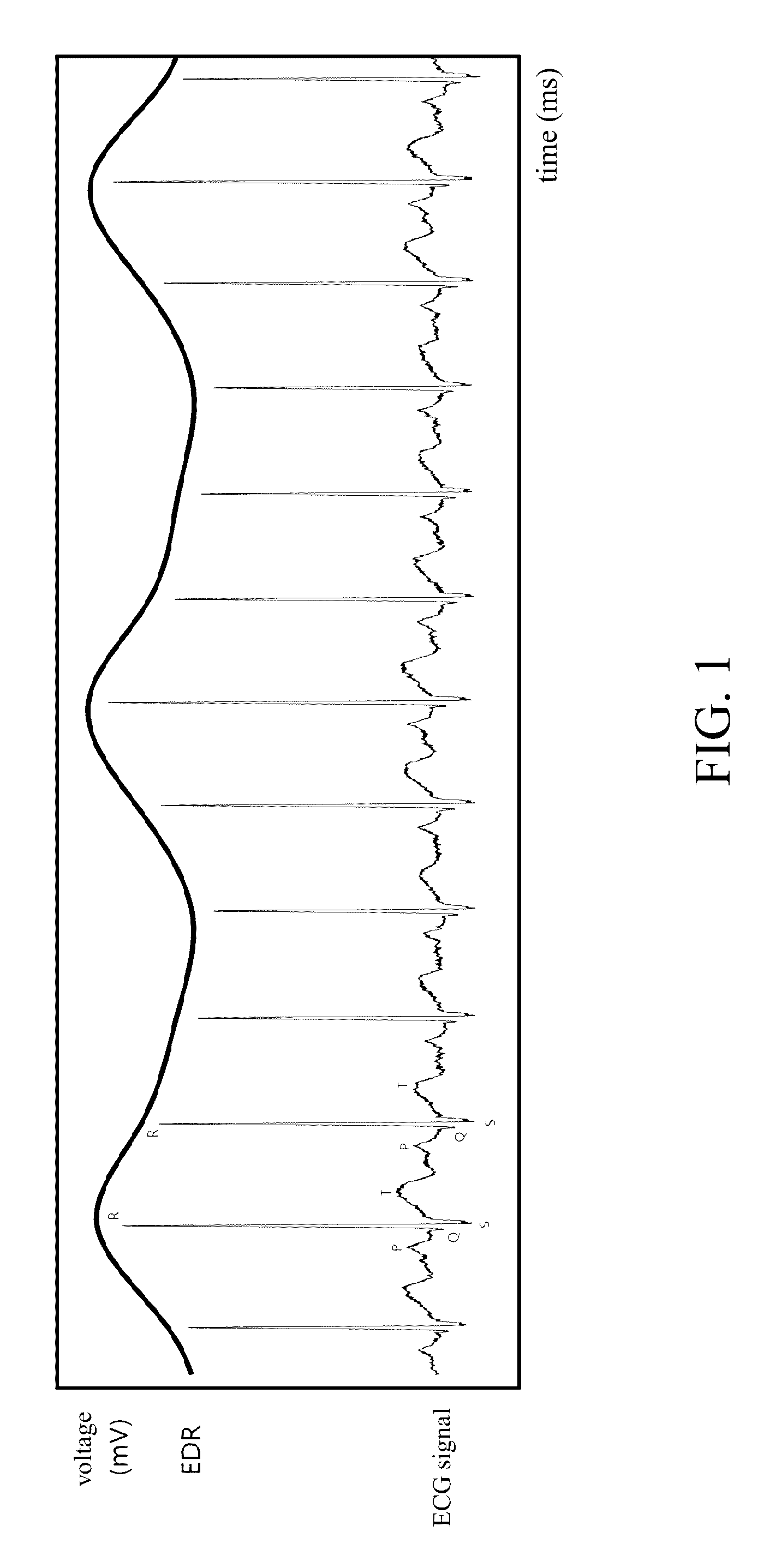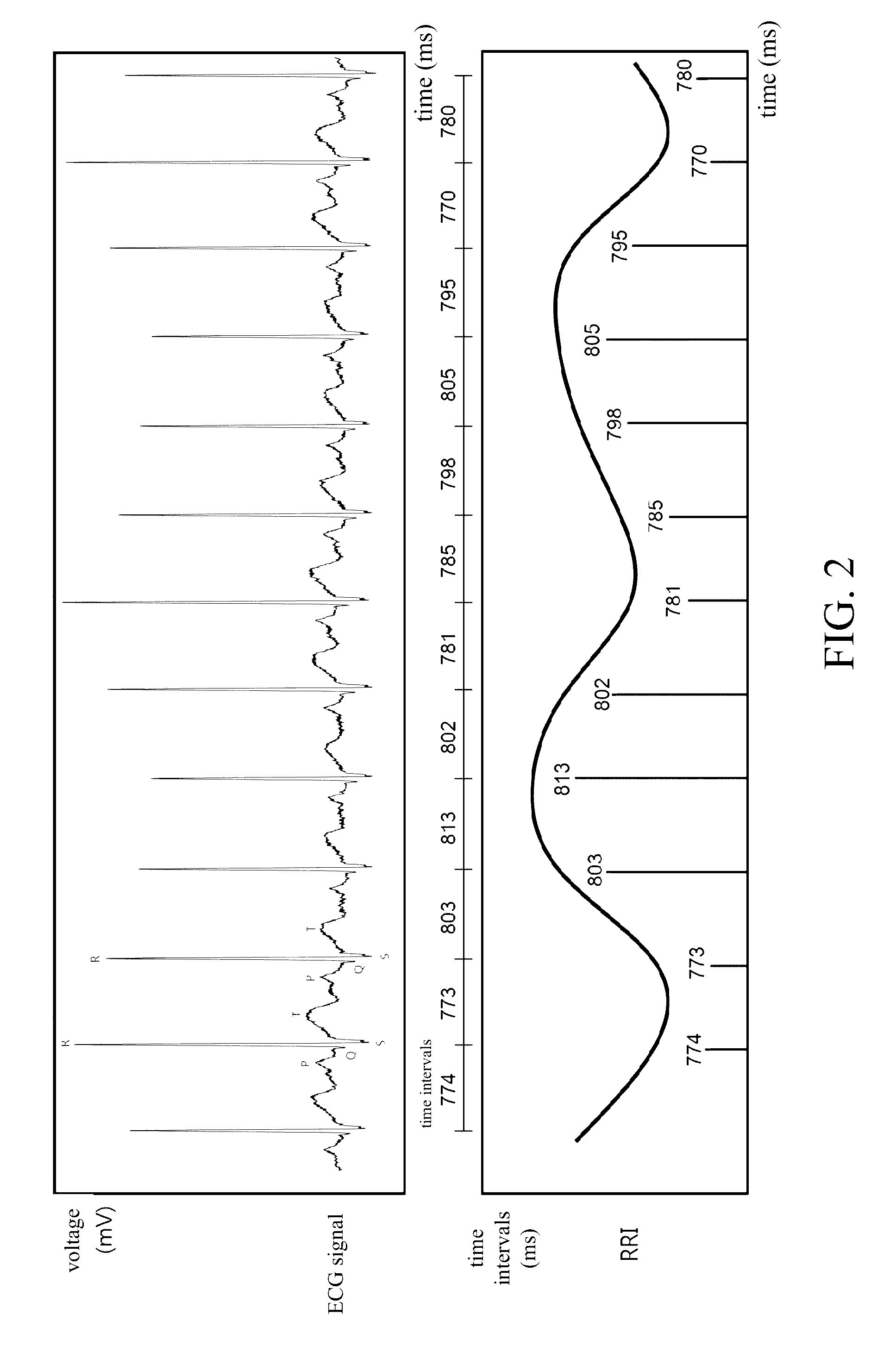Method and apparatus for estimating depth of anethesia by using ECG signal
a technology of anethesia depth and ecg signal, which is applied in the field of methods and apparatus for estimating the depth of anethesia, can solve the problems of high cost of special electrodes used in these apparatuses, high cost of detecting eeg signals, and inconvenient movement or carrying, etc., and achieves low cost, light or portable weight, and small size.
- Summary
- Abstract
- Description
- Claims
- Application Information
AI Technical Summary
Benefits of technology
Problems solved by technology
Method used
Image
Examples
first embodiment
of the Method for Estimating Depth of Anesthesia
[0042]FIG. 9 and FIG. 10 are respectively a schematic diagram illustrating an apparatus for estimating depth of anesthesia 10 in this invention and a flow chart illustrating a method for estimating depth of anesthesia in accordance with a first embodiment of the present invention. The apparatus for estimating depth of anesthesia 10 includes an ECG signal acquiring unit 20 and an ECG signal analysis unit 30, which is coupled with the ECG signal acquiring unit 20. The ECG signal acquiring unit 20 has one or more electrodes (not shown).
[0043]In step S100, the ECG signal acquiring unit 20 acquires ECG signals from a subject via the electrodes in a non-intrusive way, and then outputs digitized ECG signals to the ECG signal analysis unit 30. After receiving the digitized ECG signals, the ECG signal analysis unit 30 plots an electrocardiography (ECG).
[0044]The ECG signal acquiring unit 20 and the ECG signal analysis unit 30 detect and record ...
second embodiment
of the Method for Estimating Depth of Anesthesia
[0046]On the basis of the first embodiment, multitaper time-frequency reassignment (MTFR) can be further applied to replace the method of Fourier transformation. MTFR is a time-frequency analysis combining two techniques, the time-frequency reassignment technique and the multitaper technique. The reassignment technique significantly improves resolution of spectrums, and the multitaper technique suppresses variation of spectrums Based on these two techniques, an RRI to time graph and an EDR to time graph are transformed into frequency to power spectrums of RRI and EDR with higher resolution. Therefore, a more precise respiratory rhythmic component, a respiratory non-rhythmic component and NRR can be calculated and obtained from the spectrums, and thereby the RSA regularity is effectively quantified. Herein, the spectrums derived from the multitaper time-frequency reassignment are called MTFR spectrums. More details of the MTFR analysis ...
PUM
 Login to View More
Login to View More Abstract
Description
Claims
Application Information
 Login to View More
Login to View More - R&D
- Intellectual Property
- Life Sciences
- Materials
- Tech Scout
- Unparalleled Data Quality
- Higher Quality Content
- 60% Fewer Hallucinations
Browse by: Latest US Patents, China's latest patents, Technical Efficacy Thesaurus, Application Domain, Technology Topic, Popular Technical Reports.
© 2025 PatSnap. All rights reserved.Legal|Privacy policy|Modern Slavery Act Transparency Statement|Sitemap|About US| Contact US: help@patsnap.com



